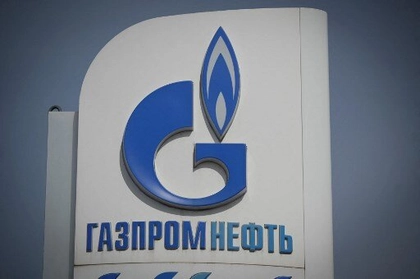Ukraineʼs state-owned gas giant Naftogaz Group and Greek state-owned company DEPA Commercial signed a letter of intent to supply US natural gas to Ukraine for the winter period 2025-2026, Naftogaz.
The agreement will enable Ukraine to receive US liquefied natural gas (LNG) routed through Greece for the first time in history.
Follow our coverage of the war on the @Kyivpost_official.
The LNG will travel via the ATLANTIC-SEE joint venture, where DEPA holds a 40% stake, first arriving in Greece and then moving onward to Ukraine. This route bypasses traditional European intermediaries and reduces Ukraine’s reliance on resold gas supplies, Naftogaz Group said in a press release.
For the US, the deal is another step towards growing US energy sources in the European market. For Ukraine, it will make history by establishing a new gas route for Ukraine through Europe.
“Delivering natural gas to Ukraine through a reliable, multi-country corridor serves as an ‘energy bridge’ between the infrastructures of Greece and Ukraine, supporting broader European energy resilience,” Naftogaz CEO of Commercial Konstantinos Xifaras said.
Under the new agreement, US gas moves through Greece and the multi-country corridor directly to Ukraine, limiting the chance of external interruptions or political pressure on the supply chain.
The LNG will first arrive in Greece and then move through Bulgaria, Romania, and Moldova before reaching Ukraine, creating a multi-country transit corridor that bypasses traditional European intermediaries.

Other Topics of Interest
Gazprom Pushes Ahead With Power of Siberia 2 Pipeline Designs Despite Uncertainty From China
Moscow has hinted at positive developments for the pipeline in recent months despite a lack of public statements on the project from Beijing and Chinese firms.
The deal includes both immediate winter deliveries for 2025-2026 and a long-term supply agreement extending to 2030, establishing a new route for gas imports and securing both urgent needs and future volumes.
“This partnership opens another reliable direction for imports for the upcoming winter. We are consistently and systematically expanding the geography of supplies to guarantee stable heating for Ukrainians and to strengthen the energy security of the entire region,” the press release quoted Naftogaz CEO Sergii Koretskyi.
The Greece-Ukraine deal is also a tool for the US to phase out “the last molecule of Russian gas”, as US Energy Secretary Chris Wright said at an energy conference in Athens earlier in November.
An official in US President Donald Trump’s cabinet said that Greece could play a key role through its pipeline system that extends across the region, AP reported last week. The new route is a part of the so-called Vertical Corridor – a new north-south gas route linking Greece to Bulgaria, Romania and Ukraine, according to AP.
Ukraine’s race to secure winter gas supplies
Naftogaz Group’s infrastructure, which includes both gas extraction and transmission, has suffered heavily in Russia’s air strikes.
A new wave of Russia’s strikes on Ukraine’s gas production started in January 2025 – the destruction was severe enough to impact the decline in gas production by almost 60% and cause a decline in Ukraine’s real GDP.
In the first quarter of 2025, the National bank of Ukraine (NBU) – Ukraine’s central bank – reported Ukraine’s real GDP only grew by 0.5%, rooting the pessimism in the on-going destruction of gas infrastructure from Russia’s strikes, on top of the workforce deficit that pressured the core inflation and constrained growth. The State Statistics Service reported Ukraine’s real GDP rose by 0.9% in the first quarter of 2025.
Now, the country needs around €2 billion ($2.3 billion) to cover additional gas imports for the 2025-2026 heating season, which it will finance through a combination of domestic reserves and international support, Prime Minister Yuliya Svyrydenko said during a government Q&A session last month, as per Ukrinform.
Previously, Ukraine could have maintained the heating season with its own gas production. Now, it needs to import 4.4 billion cubic meters of gas for the 2025-2026 winter, with almost 70% of these supplies being financially covered by the current Naftogaz team.
Naftogaz has been securing financial support from Ukrainian banks, including Ukreximbank, Ukrgasbank, and PrivatBank, to prepare for the heating season.
The company is also working with international partners: in August, Norway pledged nearly $100 million to help import natural gas, while cooperation with Poland’s ORLEN focuses on strengthening supply and storage capacity to bolster Ukraine’s energy resilience.
Ukraine has already imported 2.3 billion cubic meters of natural gas in the first half of 2025, more than 19 times the 0.12 billion cubic meters imported in the same period in 2024, according to analytic centre DixiGroup citing Energy Map data. The cost of these imports reached $1.17 billion, up sharply from $36.4 million a year earlier.
